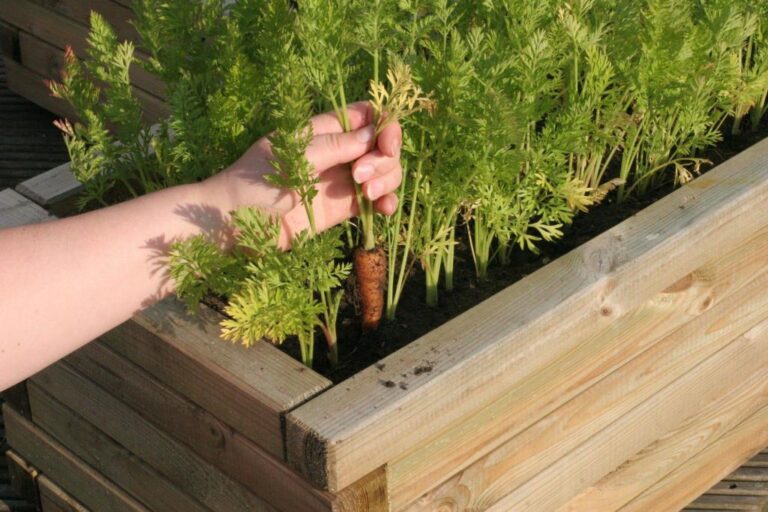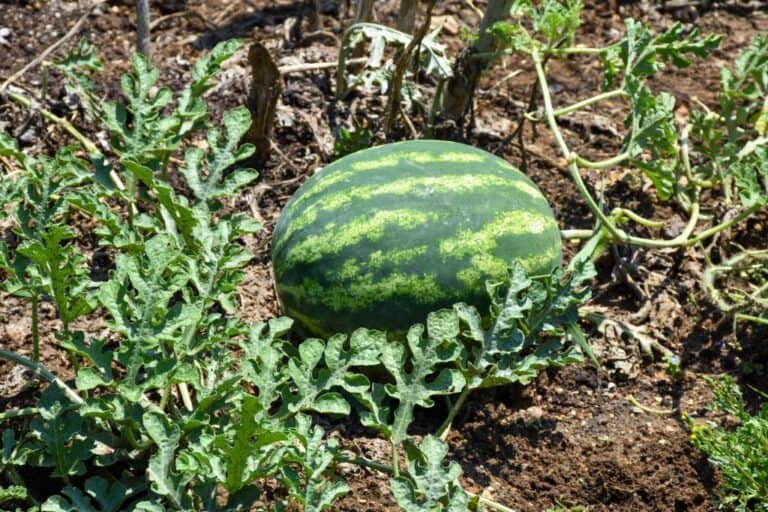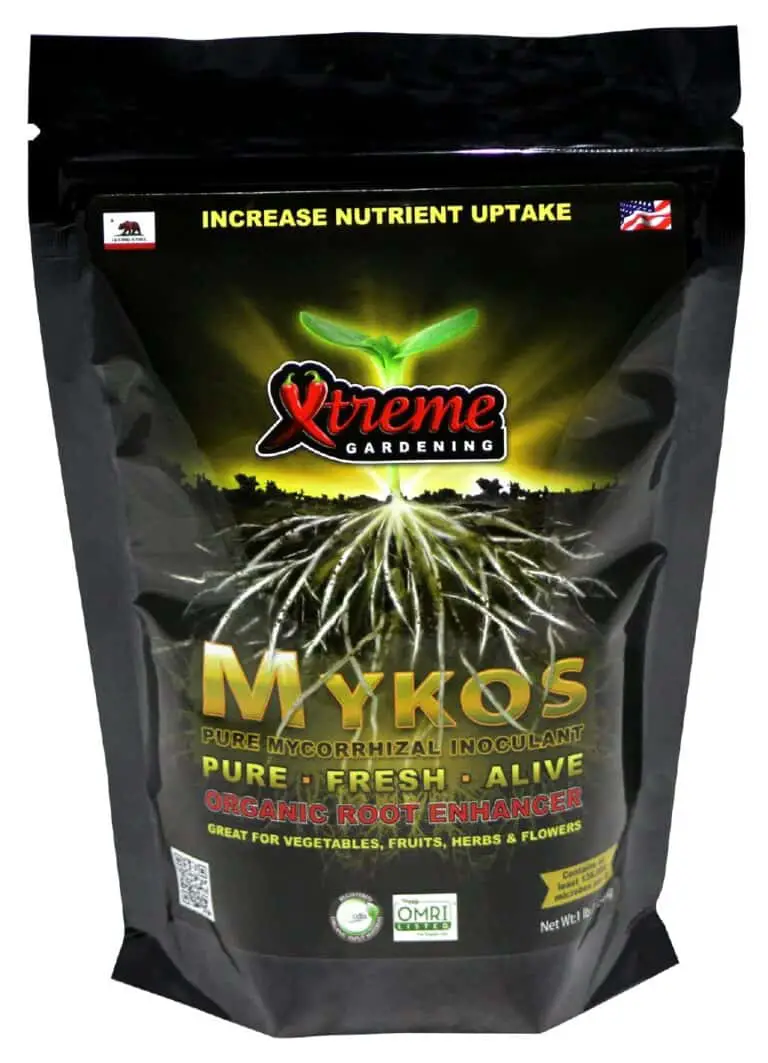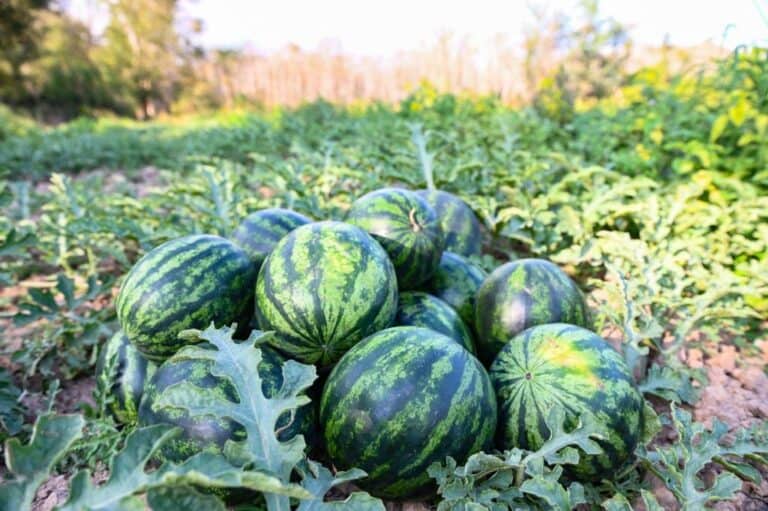Where Is The Best Place To Plant Broccoli? Growing Broccoli Like a Pro
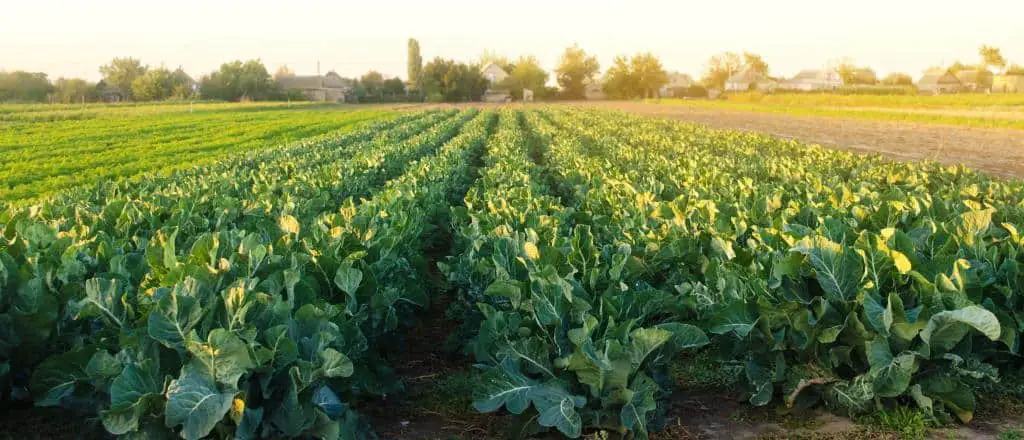
Are you ready to embark on a flavorful gardening adventure? Look no further than broccoli, the versatile and nutrient-packed vegetable that deserves a prime spot in your garden. But here’s the burning question: Where is the best place to plant broccoli?
To unlock the secrets of successful broccoli cultivation, we delve into the optimal conditions that will transform your garden into a broccoli paradise. From choosing the right soil to providing the perfect amount of sunlight, every element plays a crucial role in growing healthy, vibrant broccoli plants.
Join us as we explore ideal soil conditions, sunlight requirements, spacing considerations, and even the art of companion planting. By the end of this article, you’ll be armed with the knowledge and confidence to create an ideal environment for your broccoli, ensuring a rewarding harvest of luscious green florets that will tantalize your taste buds and nourish your body.
Get ready to dig in and discover the best place to plant broccoli!
Where Is The Best Place To Plant Broccoli? Factors to Consider
Broccoli is a nutritious and delicious vegetable that can thrive when planted in the right location. Whether you’re a seasoned gardener or a beginner, understanding the key factors for choosing the best planting spot is crucial for successful broccoli cultivation.
To set your broccoli plants up for success, several factors should be taken into account when selecting a planting location. Consider the following aspects:
- Ideal climate conditions for broccoli growth: Broccoli prefers cool temperatures, with the ideal range between 65°F and 75°F (18°C to 24°C). It thrives in regions with mild winters and moderate summers.
- Soil requirements and characteristics: Broccoli thrives in well-draining soil that is rich in organic matter. A slightly acidic soil with a pH between 6.0 and 7.0 is ideal.
- Sunlight exposure and shading considerations: Broccoli requires full sun exposure for at least six hours a day to ensure optimal growth and the development of large, healthy heads. Avoid planting in areas with excessive shade, as it may hinder the growth and quality of the crop.
- Protection against strong winds and frost: Broccoli plants are susceptible to damage from strong winds and frost. Choose a planting location that provides some natural protection, or consider using windbreaks or row covers to shield the plants during adverse weather conditions.
- Watering and drainage needs: Adequate water and proper drainage are essential for healthy broccoli plants. Ensure that the chosen location allows for proper irrigation and prevents waterlogging, which can lead to root rot.
Read: Where Does Broccoli Grow Naturally? Does Broccoli Grow in the Wild?
Countries Producing Broccoli in US and Worldwide

Broccoli, with its worldwide popularity and remarkable nutritional value, is grown in various countries around the globe. Both in the United States and internationally, several regions have emerged as significant producers of this beloved vegetable, catering to the ever-growing demand for fresh, healthy produce.
In the United States, California stands out as a major player in broccoli production. Known for its fertile soil, favorable climate, and vast agricultural resources, California’s Central Coast region, particularly in and around Salinas Valley, is often referred to as the “Broccoli Capital of the World.”
The mild coastal climate, with cool summers and moderate winters, provides an ideal environment for growing broccoli. California’s farmers take advantage of this climate advantage and produce a significant portion of the country’s broccoli supply, ensuring a steady stream of this nutritious vegetable for both domestic consumption and export.
Another notable region in the United States for broccoli production is Arizona. With its desert climate, Arizona offers a unique advantage by providing an alternative growing season.
While many other regions experience colder temperatures during the winter months, Arizona’s mild winters and abundant sunshine allow for year-round broccoli cultivation. This has made Arizona a vital contributor to the country’s broccoli supply, ensuring availability during periods when other regions may be experiencing seasonal limitations.
Moving beyond the United States, several countries around the world have also embraced broccoli cultivation to meet the global demand. One of the leading international producers of broccoli is China.
With its vast land area and diverse climate zones, China has the capacity to grow broccoli throughout the year in various regions. Provinces such as Shandong, Hebei, and Yunnan are known for their significant broccoli production, supplying both domestic markets and exporting to countries worldwide.
In Europe, Italy stands out as a prominent player in the broccoli market. Known for its rich culinary heritage and appreciation for fresh, high-quality produce, Italy has cultivated a strong broccoli industry. Regions such as Calabria, Puglia, and Sicily boast favorable growing conditions, including mild winters and abundant sunshine, allowing for the successful cultivation of broccoli.
Italian broccoli is renowned for its exceptional taste and quality, making it a sought-after choice for both local consumers and international markets.
Australia has also emerged as a significant producer of broccoli, catering to the demand of its domestic market and exporting to neighboring countries. The country’s diverse climate and extensive agricultural expertise have paved the way for successful broccoli cultivation.
States like Victoria, Queensland, and New South Wales have favorable conditions for broccoli production, ensuring a steady supply of this nutritious vegetable for Australians and beyond.
Assessing Different Planting Options for Broccoli
When it comes to planting broccoli, you have several options to consider based on your gardening preferences and available space. Explore the following alternatives:
- Planting broccoli in raised beds: Raised beds offer excellent control over soil quality, drainage, and temperature. They are particularly beneficial in areas with heavy or poorly draining soil.
- Growing broccoli in containers or pots: If space is limited or you have poor soil conditions, growing broccoli in pots or containers is a viable option. Use large containers with good drainage and provide adequate nutrition and water for the plants.
- Companion planting with broccoli: Broccoli benefits from certain companion plants that help repel pests or provide mutual support. Consider planting broccoli alongside companion plants like herbs, lettuce, and onions.
- Integrating broccoli into a traditional vegetable garden: Incorporating broccoli into a traditional garden bed allows for efficient use of space and rotation of crops. Ensure proper spacing between broccoli plants to promote healthy growth.
- Utilizing vertical gardening techniques for broccoli: Vertical gardening or vertical mulching maximizes space utilization by growing broccoli on trellises or vertical structures. This method is particularly useful for small gardens or urban environments.
Preparing the Soil for Planting Broccoli
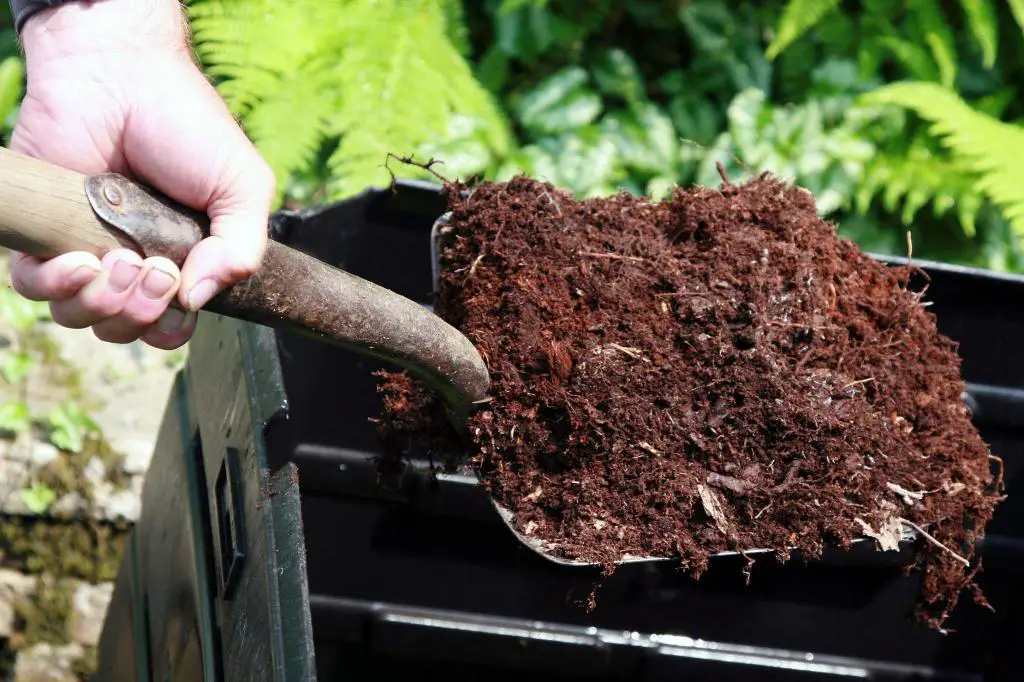
Before planting broccoli, it’s crucial to prepare the soil properly to provide the necessary nutrients and optimal growing conditions. Follow these steps for soil preparation:
- Soil testing and pH adjustment: Conduct a soil test to determine the pH level and nutrient content of the soil. Adjust the pH if needed by adding lime to raise it or sulfur to lower it, aiming for the ideal range of 6.0 to 7.0.
- Amending the soil with organic matter and nutrients: Enhance the soil’s fertility by incorporating well-rotted compost, aged manure, or other organic matter. This improves soil structure and provides essential nutrients.
- Proper soil drainage and aeration: Ensure that the soil has good drainage to prevent waterlogging, which can lead to root diseases. Amending the soil with coarse sand can improve drainage. Additionally, loosening the soil with a garden fork or tiller promotes better aeration.
- Removing weeds and other plant debris: Clear the planting area of any weeds, rocks, or large debris that may interfere with the growth of your broccoli plants. Weeds compete for nutrients and can hinder the development of your crop.
- Soil sterilization methods: If your garden has a history of soil-borne diseases or pests, you may opt for soil sterilization techniques. These methods, such as solarization or steam sterilization, help eliminate harmful pathogens and pests from the soil.
Read: Does Broccoli Grow in the Ground or Underground?
Best Time of Year to Plant Broccoli
The timing of planting is crucial for successful broccoli cultivation. Consider the following guidelines when deciding the best time to plant:
- Understanding the different growing seasons for broccoli: Broccoli has both cool-season and warm-season varieties. Understanding the specific growing seasons of the variety you choose is essential for optimal growth and harvest.
- Planting broccoli in spring for a summer harvest: For cool-season broccoli varieties, start planting in early spring, once the soil can be worked and temperatures are consistently above freezing. This allows the plants to mature and produce heads before the heat of summer.
- Fall planting for a winter harvest: Some regions with mild winters provide an opportunity for a fall planting of broccoli. Planting in late summer or early fall allows the plants to establish before colder temperatures arrive, resulting in a winter harvest.
- Overwintering techniques for extended harvests: In areas with mild winters, you can extend your broccoli harvest by overwintering the plants. This involves planting in late summer or early fall, protecting broccoli plants during winter, and harvesting in early spring.
- Regional variations in planting times: The best time to plant broccoli can vary based on your specific location and climate. Consult local gardening resources or cooperative extension offices for regional planting recommendations.
Steps to Planting Broccoli
To ensure a successful broccoli crop, follow these essential steps when planting:
- Starting broccoli seeds indoors: Begin by starting broccoli seeds indoors several weeks before the last expected frost date. Use seed trays or containers filled with seed-starting mix, provide warmth and adequate moisture, and ensure sufficient light or use grow lights.
- Transplanting seedlings into the garden: Once the seedlings have developed a few true leaves and the soil has warmed up, transplant them into the garden. Harden off the seedlings by gradually exposing them to outdoor conditions before planting. Doing so can prevent leggy broccoli seedlings, which are common in broccoli development.
- Proper spacing and depth for planting broccoli: Dig holes or furrows in the prepared soil, spacing them according to the specific variety’s recommendations. Place the seedlings in the holes at the same depth they were in the containers, and backfill with soil.
- Watering and mulching after planting: Water the transplanted seedlings thoroughly and provide regular watering throughout their growth cycle to keep the soil consistently moist but not waterlogged. Apply a layer of organic mulch around the plants to conserve moisture and suppress weeds.
- Caring for broccoli plants throughout their growth cycle: Monitor the plants regularly for signs of pests, diseases, or nutrient deficiencies. Provide additional fertilizer if needed, and support broccoli plants with stakes or cages as they grow taller. Remove any weeds that compete with the broccoli plants for nutrients.
By carefully following these planting steps, you’ll give your broccoli plants a strong start and set the stage for a bountiful harvest.
Maintenance and Care of Broccoli Plants
To ensure healthy growth and development, broccoli plants require proper maintenance and care. Consider the following practices:
- Providing adequate water and moisture levels: Broccoli plants require consistent moisture levels to thrive. Aim to provide around 1 inch of water per week, ensuring the soil remains evenly moist but not waterlogged. Regularly check the soil moisture and adjust watering accordingly.
- Fertilizing broccoli plants for optimal growth: Broccoli plants benefit from regular fertilization to support their growth. Prior to planting, amend the soil with well-rotted compost or aged manure to provide essential nutrients. Additionally, you can apply a balanced vegetable fertilizer during the growing season according to the manufacturer’s instructions.
- Controlling pests and diseases in broccoli crops: Broccoli can be susceptible to various pests and diseases, including aphids, caterpillars, and fungal infections. Implement preventive measures such as regular inspection, removing weeds, and practicing good garden hygiene. Consider using organic pest control methods or, if necessary, safe insecticides or fungicides.
- Regular weeding and removing competing vegetation: Weeds compete with broccoli plants for nutrients and water, so it’s important to keep the garden bed free from weeds. Regularly remove weeds from the area around the plants, taking care not to disturb the shallow roots of the broccoli.
- Pruning and staking techniques for supporting broccoli plants: As broccoli plants grow, they may become top-heavy and require support to prevent bending or breaking. Stake the plants when they reach a certain height, using materials such as bamboo or stakes. Additionally, prune any yellowing or damaged leaves to maintain plant health and improve air circulation.
Harvesting Broccoli
The joy of growing broccoli comes with the satisfaction of harvesting your own homegrown bounty. Here’s what you need to know about harvesting broccoli:
- Recognizing signs of readiness for harvest: Broccoli heads are ready for harvest when they are firm and dense and the individual florets are tightly closed. Look for heads that have reached a suitable size, usually around 4 to 7 inches in diameter, depending on the variety.
- Proper techniques for harvesting broccoli heads: When harvesting broccoli, use a sharp knife or garden shears to cut the main head of the plant approximately 5 to 6 inches below the head. Make a clean cut to avoid damaging nearby buds or the central stem.
- Extending the harvest period through selective harvesting: After the main head is harvested, many broccoli varieties will produce smaller side shoots known as “broccolini” or “broccoli raab.” These can be harvested by cutting the stems just above the leaf junctions. Regularly harvest these side shoots to encourage continued production.
- Post-harvest handling and storage considerations: After harvesting, it’s important to handle the broccoli heads with care. Remove any dirt or debris and promptly refrigerate them to preserve their freshness. Place the heads in a plastic bag or wrap them in damp paper towels to maintain moisture levels.
- Regrowth and potential for secondary harvests: In some cases, broccoli plants may continue to produce secondary heads after the initial harvest. Monitor the plants closely and harvest these secondary heads promptly to prevent them from becoming overmature or bitter.
Troubleshooting Common Issues in Broccoli Cultivation
Broccoli cultivation may encounter challenges along the way, but with proper troubleshooting, you can overcome common issues. Here are some tips for addressing common problems:
- Identifying and addressing nutrient deficiencies: Yellowing leaves, stunted growth, and poor head development can be signs of nutrient deficiencies in broccoli plants. Conduct a soil test to identify specific deficiencies and amend the soil with appropriate organic fertilizers or supplements to address the lacking nutrients.
- Managing pests like aphids, caterpillars, and slugs: Aphids, caterpillars, and slugs are common pests that can damage broccoli plants. Use organic pest control methods such as introducing beneficial insects like ladybugs or using insecticidal soaps or oils to control these pests. Regularly inspect the plants and manually remove any pests you find.
- Preventing diseases such as clubroot and downy mildew: Diseases like clubroot and downy mildew can affect broccoli plants. Practice crop rotation, avoid overwatering, and provide adequate air circulation to prevent these diseases. If necessary, use fungicides labeled for use on broccoli and follow the instructions carefully.
- Dealing with bolting and premature flowering in broccoli: Bolting occurs when broccoli plants prematurely produce flowers instead of forming heads. To prevent bolting, choose appropriate varieties for your climate and ensure consistent moisture levels. Harvest heads promptly and avoid exposing plants to extreme temperature fluctuations.
- Solving environmental stressors affecting broccoli plants: Broccoli plants can be sensitive to environmental stressors such as extreme heat or cold. Provide shade during hot summer months and protect plants from frost using row covers or cloths. Proper watering and mulching also help regulate soil temperature and moisture levels.
Varieties and Cultivars of Broccoli
Broccoli comes in various types and cultivars, each with its own unique characteristics. Consider the following when selecting the best broccoli varieties for your garden:
- Exploring different types of broccoli: Broccoli varieties can include the popular Calabrese type, known for its large green heads, as well as sprouting broccoli, which produces smaller florets. Purple broccoli varieties, such as Purple Sprouting and Purple Cape, offer an appealing color variation.
- Choosing the best broccoli cultivars for your climate: Different cultivars have varying heat tolerance or cold-hardiness, making them more suitable for specific climates. Research and select cultivars that are known to perform well in your region.
- Specialty varieties and heirloom broccoli options: Specialty broccoli varieties offer unique flavors, textures, or appearances. Heirloom varieties, which have been passed down through generations, can provide a sense of history and diversity to your garden.
- Broccoli hybrids and their advantages: Hybrid varieties are bred through controlled cross-pollination to exhibit specific traits, such as disease resistance, uniformity, or high yields. Consider hybrid options that align with your gardening goals and preferences.
- Where to find quality broccoli seeds or seedlings: Quality broccoli seeds or seedlings can be obtained from reputable nurseries, local farmers’ markets, or online seed suppliers. Look for certified organic options and choose fresh, viable seeds or healthy seedlings for the best results.
FAQs
Can broccoli grow in shade?
While broccoli prefers full sun, it can tolerate some shade. However, it may affect the size and quality of the heads.
How long does it take for broccoli seeds to germinate?
Broccoli seeds typically take 5 to 10 days to germinate, depending on the temperature and soil conditions.
Should I start broccoli seeds indoors or directly sow them in the garden?
Starting broccoli seeds indoors allows for an earlier start and better control over growing conditions, but you can also directly sow seeds outdoors.
How can I prevent broccoli plants from bolting?
To prevent bolting, choose appropriate broccoli varieties, provide consistent moisture, and avoid temperature fluctuations. Harvesting heads promptly can also help.
Can I plant broccoli in the same spot every year?
It is generally not recommended to plant broccoli in the same location year after year to prevent the buildup of diseases and pests. Rotate crops to maintain soil health.
Can I plant broccoli in the same spot every year?
It is generally not recommended to plant broccoli in the same location year after year to prevent the buildup of diseases and pests. Rotate crops to maintain soil health.
How do I know when broccoli heads are ready to harvest?
Broccoli heads are ready to harvest when they are firm, compact, and the buds are tightly closed. Avoid waiting too long, as overmature heads may become tough and bitter.
Can I freeze broccoli for later use?
Yes, you can freeze broccoli for later use. Blanch the florets in boiling water for a few minutes, then cool and store them in airtight containers or freezer bags.


